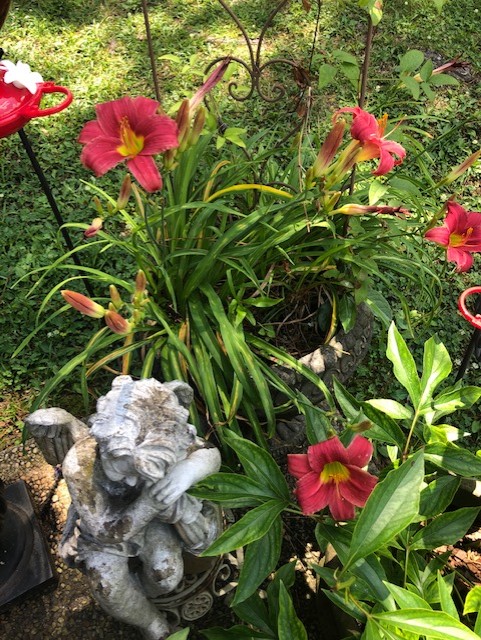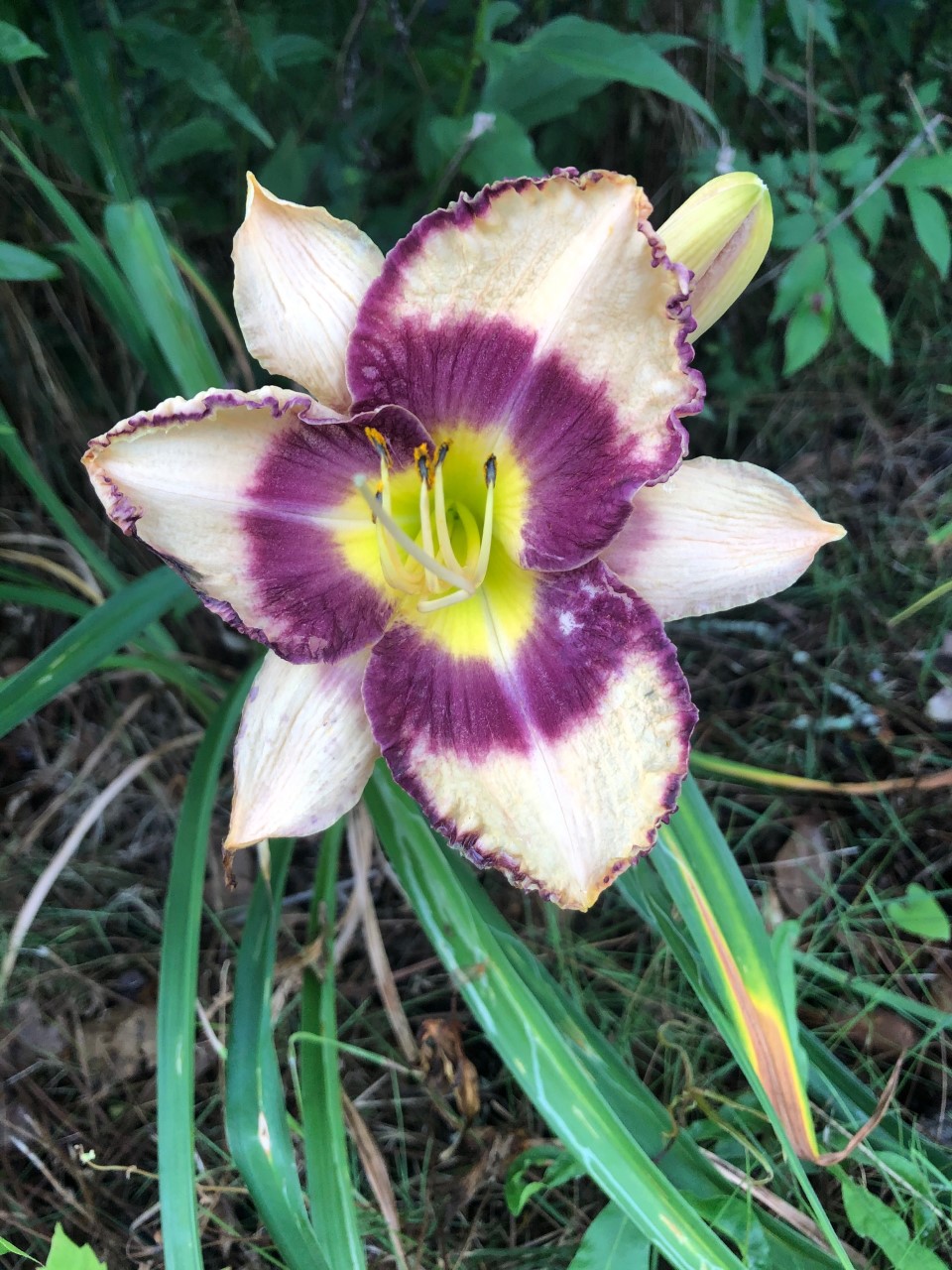
June is when perennials really shine and few are tougher or more beautiful than the daylily. They are a flowering plant in the genus Hemerocallis. Just in case that is Greek to you, Hemerocallis comes from the Greek words hemera for “day” and kalso for “beautiful.” I second that and I can’t speak a lick of Greek.
Yes, it’s true. Each flower only lasts for one day but each stem or scape can hold many flower buds. For those who have gardened for years, you know they’re resilient. If you are just beginning your flower garden journey, the daylily is a sure bet.
There are about 15 species of daylilies and more than 80,000 cultivars have been registered by local and international Hemerocallis societies. So there are many from which to choose. If you are a diehard daylily fan and want to know more about them or to join the American Hemerocallis Society. Closer to home, there is the North Georgia Daylily Society. They have meetings in Gainesville if you are interested.
And here are some fun facts about daylilies that you may not have known:
- While daylilies, generally bloom during the day, there is a night-blooming daylily called the H. citrina that blooms pale yellow spider-shaped blossoms at night.
- Both the roots and the flowers are edible and are commonly used in Chinese cuisines.
- The young leaves of some species are also edible.
- Daylilies contain many beneficial vitamins and minerals. Plus, eating these flowers can help detox the body and help cure insomnia.
- Because their roots can absorb a lot of water, daylilies can prevent brush fires and soil erosion on slopes.
- Some believe that if pregnant women wear daylilies on their waist, they will give birth to a male child.
Disclaimer here, I am not suggesting that you go outside and start eating daylilies. I’ve never done that and have not a clue as to how they might taste but apparently they are good for you. Who knew? I just like looking at them.
The perfect perennial
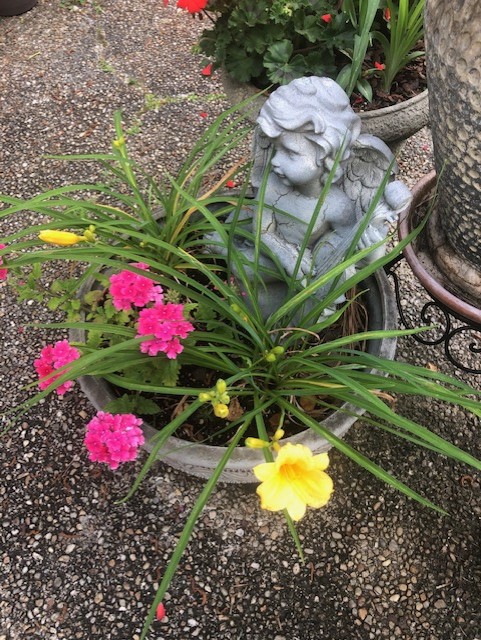
Despite each bloom’s short life, daylilies are nicknamed the “perfect perennial plant” because they are one of the easiest and hardiest perennials around! Once they are established, they are essentially carefree and can survive the coldest of winters and the hottest of summers. Basically, daylilies are suitable for all landscapes and climates.
Plant in masses or as a ground cover on a slope for the best visual impact. They also perform well in containers. Grow in full sun or partial shade. Daylilies can also tolerate most soils but do best in rich loam. Lighter, pastel shades, such as yellow or pink, will require a sunnier location to bring out their colors, while darker daylilies, such as some red and purple flowers, need shade because their darker colors will absorb heat.
How hardy are they? Here are two true stories. Once several years ago, I was dividing some daylilies to transplant into another flower bed. I call it spreading the wealth. Anywho I had dropped one of the divisions on the ground. It was just laying there, roots exposed, in the bright sun. A few weeks later, it bloomed which is how I discovered the little homeless jewel. I immediately stuck it in a container and it’s still going strong.
A couple of months ago, my niece Jennifer was visiting from Tennessee. She brought me a huge pile of daylilies from one of her flower beds. She put them in a plastic bag with the tops poking out of the top. They laid in that spot up until a few weeks ago when I finally determined where I would plant them. Not only are they thriving, but they are also in full bloom. If that is not resilient I don’t know what is.
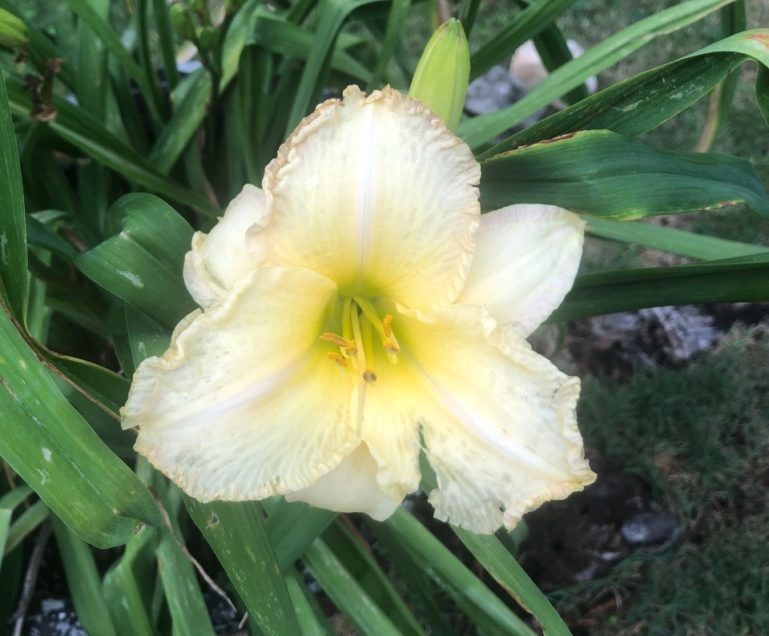
Caring for daylilies
How to grow daylilies? It would be easy to say stick them in the ground and walk away, but there are a few things you can do when caring for daylilies to get the most out of these tough growers. A basic 10-10-10 fertilizer in the spring and during bloom is all you need, though gardeners who specialize in daylily care will recommend more often, as in once a month.
Once established, these hardy plants will tolerate drought. Water as needed.
Once up and growing, daylilies perform best if you remove the seed pods. Leaving them on the plant will retard the following year’s bloom.
In early spring, daylily care consists of removing the dead leaves from the surrounding ground and weeding. A cover of mulch will keep the weeds down though it isn’t necessary for the plant itself. Once full-grown, a daylily’s leaves are so thick, they tend to shade out surrounding weeds.
Disease is rare among the varieties of daylily. Care should be taken, however, when it comes to aphids or thrips and usually the problem begins with other garden plants first. An application of all-purpose insecticide, whether organic or chemical or a strong spray of water usually takes care of the problem.
Some favorites from my garden
For all the reasons above, I love daylilies. I’m sharing some of my favorites with you and hope you do the same.
Gardening is about sharing, whether plants with friends or neighbors or pictures with all of us. That, friends, is how we get new ideas to experiment with in our own gardens. Most of these daylilies have been with me for more than 30 years, again it’s a testament to their resilience.
I have so many daylilies, I rarely add new ones to my collection but for Christmas, my sister Angela gave me a gift certificate to Gilbert H. Wild. Anytime I’m looking for a daylily that I can’t find at our local garden centers, Gilbert Wild is my go-to mail order catalog. Thye have an amazing selection. Some are a little pricey, but they have a sale section at some very affordable prices which is where I found my newest additions which I planted in the spring.
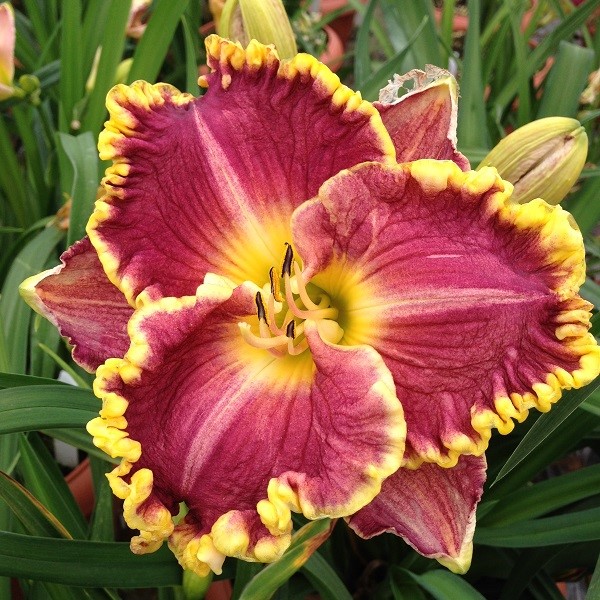
One is called Daria. The coloring just took my breath away. The other is a Mighty Chestnut. I ordered that for two reasons, the coloring is beautiful, and the name reminded me of my Daddy and a poem I recalled memorizing in school. My Daddy was a blacksmith and horse trainer. Mighty Chestnut made me think of Henry Wadsworth Longfellow’s The Village Blacksmith.
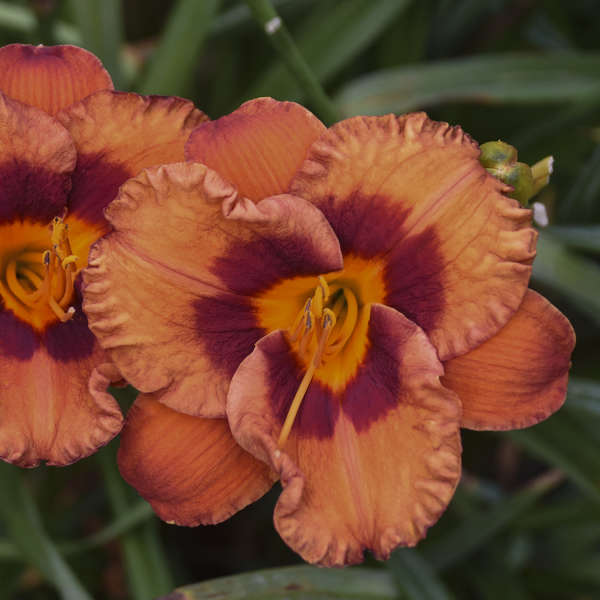
Under a spreading chestnut-tree
The village smithy stands;
The smith, a mighty man is he,
With large and sinewy hands,
And the muscles of his brawny arms
Are strong as iron bands.
I have a feeling this one is going to be very tough and very beautiful. It will always remind me of my Daddy!

